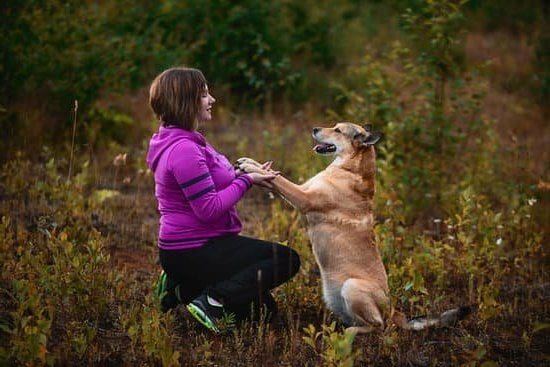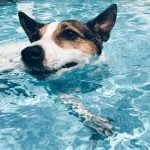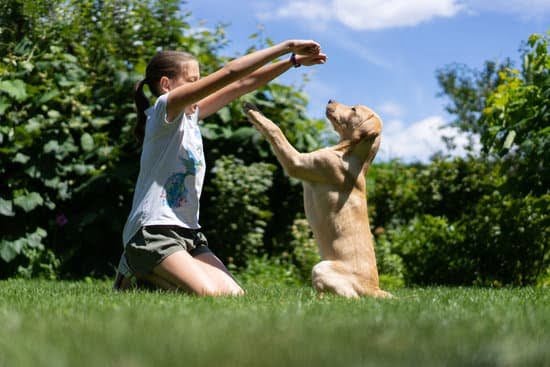Are you wondering how to potty train a baby dog? Potty training is an essential part of raising a happy and healthy puppy, and it’s important to start this process as early as possible to establish good habits. In this article, we will guide you through the process of potty training your baby dog, offering tips on setting up a schedule, choosing the right tools, using gentle techniques, and establishing consistency.
Potty training is crucial for ensuring that your baby dog grows into a well-behaved and obedient adult dog. It not only helps in maintaining cleanliness in your home but also strengthens the bond between you and your furry friend. Starting the potty training process early can prevent future behavioral issues and make life with your pet much more enjoyable.
In the following sections, we will provide you with valuable information on how to start potty training with your baby dog by setting up a schedule and choosing the right tools for effective training. Additionally, we will explore gentle techniques for positive reinforcement and dealing with accidents while emphasizing the importance of patience and persistence in overcoming challenges.
With our expert advice and additional resources, you’ll be well on your way to successfully potty training your baby dog and celebrating the milestone achievements along the way.
Getting Started
Setting up a potty training schedule is essential when learning how to potty train a baby dog. Just like human babies, young puppies need structure and routine to learn where and when to go potty. The key to success is consistency and patience. When getting started with potty training, it’s important to establish a schedule that includes regular potty breaks, feeding times, playtime, and rest periods.
To set up a potty training schedule for your baby dog, begin by observing their behavior and taking note of when they typically eliminate. Puppies usually need to go potty after waking up from naps, after meals, and after playtime. By paying attention to these cues, you can start anticipating when your puppy needs to go outside or use the designated indoor potty area.
It’s also important to remember that young puppies have small bladders and may not be able to hold their pee for very long. As a general rule of thumb, puppies should be taken out for potty breaks every 1-2 hours during the day, as well as immediately after waking up, eating, drinking, or playing. This level of frequency helps prevent accidents indoors and reinforces the desired behavior of going potty in the right place.
Choosing the Right Tools
Potty training pads, crates, and toys are essential tools for successfully potty training a baby dog. These items help create a comfortable and structured environment for your puppy, making the potty training process more effective.
Potty training pads are absorbent sheets that can be placed in designated areas for your puppy to relieve themselves. They are especially useful for indoor potty training, as they protect your floors from accidents and make clean-up easier. When choosing potty training pads, opt for ones that are leak-proof and large enough to accommodate your puppy’s size.
Crates are another valuable tool for potty training. Dogs have a natural instinct to keep their sleeping area clean, so using a crate can help encourage them to hold their bladder until you take them outside. Make sure to select a crate that is large enough for your puppy to stand up, turn around, and lie down comfortably, but not too spacious that they can designate an area for eliminating waste.
Toys can also aid in the potty training process by keeping your puppy engaged and distracted from having accidents indoors. Providing chew toys and interactive toys can help alleviate boredom and reduce the likelihood of your puppy having indoor accidents due to restlessness.
Using the right tools is crucial in successfully potty training a baby dog. By incorporating potty training pads, crates, and toys into your training routine, you can create a positive environment that promotes good behavior and sets your puppy up for success.
| Puppy Training Tool | Importance |
|---|---|
| Potty Training Pads | Protects floors from accidents and makes clean-up easier. |
| Crates | Encourages puppies to hold their bladder until they can go outside. |
| Toys | Keep puppies engaged and distracted from having indoor accidents due to restlessness. |
Gentle Techniques
Potty training a baby dog requires gentle and positive reinforcement techniques to help them learn and understand the proper behavior. Using reward-based training methods can make the process more effective and enjoyable for both the puppy and the owner. Here are some gentle techniques for potty training a baby dog:
- Use treats: Whenever your puppy successfully eliminates in the designated potty area, reward them with their favorite treats. This positive reinforcement will encourage them to continue the desired behavior.
- Verbal praise: Along with treats, verbal praise such as “good boy/girl” or “well done” can also reinforce positive behavior. Dogs thrive on their owner’s approval and will be more likely to repeat the behavior when praised.
- Playtime as a reward: After your puppy has successfully gone potty in the designated area, engage in a short play session as a reward. This not only reinforces good behavior but also strengthens the bond between you and your pet.
The key to gentle techniques for potty training a baby dog is to create a positive association with going potty in the right place. By using rewards and positive reinforcement, you are teaching your puppy that eliminating in their designated spot results in pleasant experiences.
Consistency is crucial when implementing these gentle techniques. Make sure to always carry treats or have access to playtime after your pet goes potty so you can immediately reward their good behavior. With patience and persistence, your baby dog will soon learn how to potty train effectively.
Consistency Is Key
Establishing a routine for potty breaks is essential when it comes to effectively potty training a baby dog. Consistency is key in helping your furry friend understand where and when they should be doing their business. By following a consistent schedule, you can make the process of potty training much easier for both you and your puppy.
Creating a Schedule
The first step in establishing a routine for potty breaks is to create a schedule that includes regular intervals for bathroom breaks. This means taking your puppy out first thing in the morning, after meals, before bedtime, and several times throughout the day. By sticking to this schedule, you can help your puppy develop good bathroom habits.
Using Cue Words
In addition to following a schedule, using cue words can also be helpful in establishing consistency during potty training. Choose simple cue words such as “go potty” or “do your business” that you can use every time you take your puppy outside to go to the bathroom. Over time, your puppy will come to associate these cue words with the act of eliminating waste and will learn to respond accordingly.
Paying Attention to Signals
Finally, paying attention to your puppy’s signals is crucial in maintaining consistency during potty training. Watch for signs that your puppy needs to go, such as sniffing around or circling a particular area. When you notice these signals, take your puppy outside right away so they can eliminate waste in the appropriate place.
By establishing a routine for potty breaks and sticking to it consistently, you can effectively teach your baby dog how and where to go to the bathroom, making the potty training process much smoother and more successful.
Dealing With Accidents
Potty training a baby dog can be a challenging process, and accidents are bound to happen. It’s important to understand how to effectively handle these accidents in order to ensure the success of the potty training process. Here are some tips on how to deal with accidents and correct negative behavior during the potty training journey:
- Stay calm and avoid punishment: When accidents occur, it’s crucial not to scold or punish your baby dog. This will only create fear and anxiety, making the potty training process more difficult. Instead, focus on remaining calm and cleaning up the mess without any negative reactions towards your pet.
- Use positive reinforcement: To correct negative behavior, it’s important to use positive reinforcement techniques. When your baby dog goes potty in the designated area, be sure to praise them and offer treats as a reward. This will help them associate proper potty behavior with positive outcomes.
- Consistency is key: Consistently taking your baby dog to their designated potty area and providing positive reinforcement for good behavior will help them understand where they should go potty. This consistency will also help correct negative behavior over time.
Accidents are a natural part of the potty training process for baby dogs, but with patience and positive reinforcement, you can effectively correct negative behavior and continue making progress towards successful potty training.
Remember that each baby dog is unique and may require different approaches when it comes to correcting negative behavior during potty training. If you’re struggling with this aspect of potty training, don’t hesitate to reach out to a professional trainer or veterinarian for additional guidance on how to effectively handle accidents and correct negative behavior while potty training your furry friend.
Overall, staying patient, consistent, and using positive reinforcement techniques will go a long way in helping your baby dog learn where they should go potty.
Patience and Persistence
Potty training a baby dog can be challenging and frustrating at times, but it’s important to remember that patience and persistence are key when overcoming these challenges. It’s common for puppies to have accidents in the house as they are still learning and developing their bladder control. As a pet parent, it’s essential to remain patient and understanding during this learning process.
One of the best ways to overcome challenges in potty training is to stay consistent with the training schedule and techniques. Consistency helps the puppy understand what is expected of them and reinforces good potty habits. This means taking the puppy outside or to their designated potty area at regular intervals throughout the day, especially after meals, playtime, and naps.
In addition to consistency, positive reinforcement plays a crucial role in overcoming challenges in potty training. When the puppy successfully goes potty in the right place, be sure to praise them enthusiastically and offer a small treat as a reward. This helps the puppy associate going potty in the correct spot with positive experiences, making them more likely to repeat this behavior in the future.
It’s important not to scold or punish the puppy for accidents, as this can create fear or anxiety around potty training. By utilizing these gentle techniques and staying patient and persistent, pet parents can effectively overcome challenges and successfully potty train their baby dog.
Celebrating Success
After successfully setting up a potty training schedule, choosing the right tools, and using gentle techniques for potty training your baby dog, it’s time to celebrate their success by helping them transition to outdoor potty training. This is an essential milestone in your puppy’s development and a big step towards independence.
Graduating to outdoor potty training not only ensures that your dog knows how to relieve themselves in the appropriate place but also encourages them to explore and enjoy the outdoors.
Gradual Transition
When transitioning from indoor to outdoor potty training, it’s important to make the process gradual for your baby dog. Start by taking your puppy outside first thing in the morning, after meals, and before bedtime. These are times when they are most likely to need a bathroom break. If you notice any signs that your puppy needs to go such as circling or sniffing around, take them out immediately.
Positive Reinforcement
As with indoor potty training, positive reinforcement is key when transitioning to outdoor potty training. Praise and reward your puppy every time they successfully eliminate outdoors. This will help them associate going outside with positive experiences and reinforce the behavior you want. Remember to be patient and consistent as it may take some time for your puppy to fully adjust to outdoor potty training.
Establishing a Routine
Similar to indoor potty training, establishing a routine is crucial for successful outdoor potty training. By taking your puppy out at regular intervals each day, you can help them understand when it’s time for bathroom breaks. Over time, they will learn to hold their bladder until they are taken outside, reducing accidents indoors.
By celebrating the success of transitioning from indoor to outdoor potty training, you’re not only reinforcing good behavior but also strengthening the bond and trust with your baby dog.
Additional Tips and Resources
When it comes to potty training a baby dog, having access to expert advice and additional resources can be extremely beneficial. Many pet owners find themselves facing challenges or needing further guidance when it comes to this important aspect of puppy care. Fortunately, there are numerous tips and resources available to help ensure successful potty training for your furry friend.
One valuable resource for potty training a baby dog is consulting with a professional dog trainer or behaviorist. These experts have the knowledge and experience to provide personalized advice tailored to your specific situation. Whether you’re struggling with consistency, dealing with accidents, or need guidance on positive reinforcement techniques, a professional can offer valuable insights and support.
In addition to seeking professional advice, there are also numerous books, online articles, and videos dedicated to the topic of potty training for dogs. These resources often provide step-by-step guides, real-life examples, and troubleshooting tips for common potty training challenges. By exploring a variety of resources, pet owners can gain a more comprehensive understanding of how to potty train a baby dog effectively.
Furthermore, reaching out to fellow pet owners who have successfully potty trained their own dogs can be an invaluable source of support. Whether through online forums, social media groups, or local meetups, connecting with other dog owners can provide firsthand advice and encouragement. Sharing experiences and learning from others who have faced similar struggles can help alleviate any feelings of frustration or isolation during the potty training process.
Conclusion
Potty training a baby dog is no easy task, but the bond and trust that is built through this process is truly invaluable. As a pet owner, taking the time to understand the importance of potty training for baby dogs sets the foundation for a strong and positive relationship with your furry friend.
By setting up a potty training schedule, choosing the right tools, using gentle techniques like positive reinforcement, and establishing consistency in routine, you are not only teaching your puppy good habits but also building trust and understanding between you.
One of the most important aspects of potty training a baby dog is patience and persistence. Accidents will happen, and it’s essential to approach these situations with understanding. Correcting negative behavior in a gentle manner and celebrating successes with rewards are key components of successful potty training. By overcoming challenges with determination and staying consistent in your approach, you are ultimately fostering a deeper connection with your puppy.
In conclusion, potty training is an essential part of raising a happy and well-behaved dog. While it may require time and effort, the bond that is formed throughout this process makes it all worth it.
With the right tools, techniques, and plenty of patience, you’ll be on your way to successfully potty training your baby dog in no time. And remember, always seek expert advice when needed – there are countless resources available to guide you through this journey on how to potty train a baby dog.
Frequently Asked Questions
At What Age Should a Puppy Be Potty Trained?
Puppies can start their potty training as early as 8 weeks old. It’s important to start the training process early to establish good habits and prevent accidents in the house.
How Long Does It Take to Housebreak a Puppy?
The time it takes to housebreak a puppy can vary depending on factors such as breed, consistency of training, and the individual puppy’s temperament. On average, it can take anywhere from 4 to 6 months for a puppy to be fully housebroken.
Can You Potty Train a 1 Year Old Dog?
While it may be more challenging, it is possible to potty train a 1 year old dog. The key is to be patient, consistent, and use positive reinforcement. It may take longer than with a young puppy but with dedication, it can be done successfully.

Welcome to the blog! I am a professional dog trainer and have been working with dogs for many years. In this blog, I will be discussing various topics related to dog training, including tips, tricks, and advice. I hope you find this information helpful and informative. Thanks for reading!





